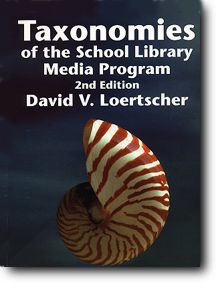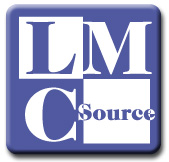 |
 |
 |
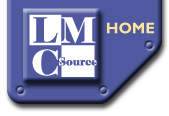 |

Management
 My Reading and Writing Log Microsoft Access™ Edition
My Reading and Writing Log Microsoft Access™ Edition
Landon D. Loertscher and David V. Loertscher; 2005; ISBN:
1-933170-21-2; Price: $100.00
Tired of electronic reading programs that are enormously expensive?
Tired of limiting what a child or teen reads?
Tired of awarding reading points only for factual recall?
Consider My Reading and Writing Log.
If you have Microsoft Access™ available in the classroom, the library, or the school, teachers can have each child create a database not only for what they are reading but also to allow them to write about their reading correlated to the writing program in the school.
Features include:
- Each student has a private database to record their reading and writing about what they read. (no tests to take)
- The student can read anything:
- Books, periodical articles, graphic novels, newspapers, reference books, Internet sites, etc.
- Anything recommended by teachers, librarians, parents, friends, or what they discover themselves.
- Materials at, below, or above their reading level.
- Parts of things or the whole thing (specific chapters in a nonfiction book, for example).
- The student writes about what they read:
- A type of writing being studied with their teacher (a character sketch, a personal response, outline of the topic, description of the plot, important ideas, answers to essential questions, research notes, etc.)
- Whether or not they liked the book or notes of recommendation to a friend.
- Notes on the topic of a classroom unit where they are reading a lot about the topic.
- The student then can email a report of what they read and what they wrote to their teacher or librarian for a particular time period (reading for a topical unit, a week or two, a semester, etc.)
- The librarian can track selected students in a database.
- The teacher can track every student in each class up to ten periods a day and 49 students per class.
- Both the teacher and the librarian can add comments about the reading and writing to the database.
 SuperTeaching: 15 THINK! Models for Instructional Improvement in College Courses, Online Learning, and Professional Development
SuperTeaching: 15 THINK! Models for Instructional Improvement in College Courses, Online Learning, and Professional Development
David V. Loertscher; Hi Willow Research and Publishing; 2006; ISBN 1-933170-19-0; $25.00
Teaching adults, whether in colleges, school districts, or online often takes the form of textbook/lecture/research paper as the main technique of instruction. Students of this mode are expected to read, listen, and regurgitate what they have outguessed the teacher might want. In the days of the Internet, term papers often become nothing more than exercises in plagiarism.
The fifteen models in Super Teaching provide new avenues to make learning experiences exciting, engaging, active, and push high-level thinking. Each follows constructivist ideas of teaching and learning emphasizing collaboration among students to lift everyone from passive learning to the realm of big ideas.
Linked with the Wiki Templates for Super Teaching, these 15 models encourage professors and professional developers to link themselves to libraries and make new uses of an information-rich and technology-rich environment where plagiarism is eliminated.
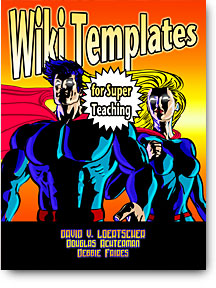 Wiki Templates for SuperTeaching
Wiki Templates for SuperTeaching
David V. Loertscher, Douglas Achterman, and Debbie Faires; Hi Willow Research and Publishing; 2006; Booklet and CD;
ISBN 1-933170-20-4; $50.00
A wiki is a collaborative workspace – a way groups can build a document, an article, a project or do other collaborative writing or planning together. Most of us know about Wikipedia.org – the largest encyclopedia in the world where anyone can write an article and anyone can edit it. The 50+ templates in this collection are collaborative spaces where the Think! Models of Ban Those Bird Units and SuperTeaching can be put into practice on line. And, best of all, at this point, they can be used for free from anywhere in the world.
The templates in this collection have been designed for use in Seedwiki.com software, primarily because when the students begin the editing process, they will see a familiar word processing toolbar much like Microsoft Word. The templates can be tweaked to be used in any other wiki software. How do you use them? First, you get your own account on Seedwiki.com. Then you create your own wiki for a unit of instruction – say Causes of the Civil War. Then you copy a template from our disk into your wiki; add specific directions, and it’s ready for student work. This will jump start your use of this technology and provide instructional designs that match the 15 Think models created by Loertscher, Koechlin, and Zwaan.
Not only can you use the templates as designed, but they are easy to modify for your particular use. Once you see our instructional designs, you can build your own from scratch.
 Raise a Reader at any Age: A Librarian’s and Teacher’s Toolkit for Working with Parents
Raise a Reader at any Age: A Librarian’s and Teacher’s Toolkit for Working with Parents
by Connie Champlain, David V. Loertscher and Nancy A.S. Miller; 2005;
ISBN: 0-933170-18-2; Price: $35.00
No Child Left Behind requires schools to build relationships with the community in an effort to help every child learn to read. Raise A Reader At Any Age provides a toolkit with ready-made tri-fold and bi-fold brochures that librarians can print and modify, adding local information from a CD. These valuable brochures place the school and public library into a central role in literacy, showing parents how to use library resources for both children and teenagers. They show how to build avid and capable readers. The user must have access to Microsoft Word (any recent version). A quick and indespensible tool for working with individual parents, groups of parents, and doing teacher inservice.
 Time & Task Tracker for School Library Media Personnel
Time & Task Tracker for School Library Media Personnel
Nancy A.S. Miller; Hi Willow Research & Publishing, 2005;
ISBN 1-933170-17-4; $60.00
Administrators often want to know what the library media professional and support personnel do in the library. This Microsoft Excel template allows both professionals and support staff to track the number of minutes on random days spent on numerous tasks aligned with Information Power. Twice a day adults estimate the amount of time they have spent on their various tasks and enter it into a simple form. After approximately 15 randomly selected days this spreadsheet will draw amazing graphics analyzing how both professionals and support personnel spend their day. It is a very powerful tool in demonstrating the difference between the roles of professional and support personnel.
You must have Microsoft Excel on you computer to use this package.
by Daniel W. Fuller, ed.; Hi Willow Research and Publishing; 2004; ISBN 0-931510-09-3; $30.00
Thousands of library media specialists have created web sites and portals to link students 24 hours a day and 7 days a week into a “smaller” but very high quality information system. Nine essays written by David Loertscher, Daniel Fuller, Joe Marone, Debra Karpuk, and others highlight major issues and practices that are taking place in this new online environment. What are the dreams and hopes for this information service? What is the state of statewide databases for kids? What happens when every student has a laptop and is connected? How does one catalog such an environment? What are e-lockers? These and many more are considered as experiments continue to help students beyond their tendency to just Google.
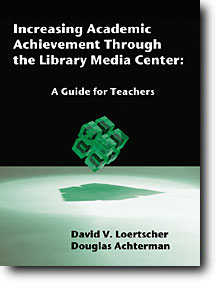 Increasing Academic Achievement Through the Library Media Center:
Increasing Academic Achievement Through the Library Media Center:
A Guide for Teachers
David V. Loertscher and Douglas Achterman; Hi Willow Research and Publishing ISBN: 0-931510-90-2; 2003; $20.00
If you liked Reinvent your School’s Library, this is the perfect companion piece written directly for the teacher who is seeking to increase “scores” now in its second edition.
Using the effective “one idea per page” format, teachers are presented with ideas how to collaborate effectively, what types of library media center activities are likely to produce results, how to promote reading with the library media specialist as a partner, how to enhance learning through technology, and how to promote and partner in the teaching of information literacy.
The Second edition contains a number of new pages on a variety of topics and older ideas have been revised. The goal has been to continue to communicate very clearly to a classroom teacher the benefits of working with the library media specialist collaboratively.
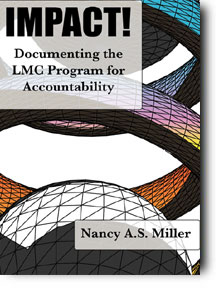 Impact! Documenting the LMC Program for Accountability
Impact! Documenting the LMC Program for Accountability
Nancy A.S. Miller. Hi Willow Research & Publishing, 2003; ISBN 0-931510-96-1; $60.00
A template for Microsoft Excel (PC or Mac, Office ‘97 or higher required), this amazing computer software tracks the contribution of the LMC program in three essential areas: collaborative planning, information literacy, and links to state standards. By spending five minutes a day recording what units of instruction and teaching you have been doing, this template then transforms what you do into amazing charts, diagrams, and tells both you and administrators where the emphasis of the LMC program lies.
For example, you enter into a template the teacher, the topic, the state standards met, the info literacy skill taught (many items on pull-down menus) and the program takes care of the rest.
Nancy’s expertise with Excel goes far beyond what we have ever imagined possible with the Excel spreadsheet. You must have Excel on your computer to use this package. Great for collapsing data across schools to provide a district picture of what’s going on. Takes about an hour of experimentation to get the idea of how to enter the data, but there are practice templates included that demonstrate what this software can do. A great companion to Loertscher/Todd’s We Boost Achievement!
Download a trial version (works for 5 launches). ITrial6rev_2.xls (1.7MB)
Also download the instruction booklet for Impact! IMPACTdoc.pdf (82KB)
2nd Edition
David V. LoertscherHi Willow Research and Publishing
ISBN: 0-931510-75-9; 2000; $45.00
A complete revision of Loertsher's most popular guide to creating and managing a library media center with the intent of making a difference in academic achievement. The taxonomy itself has been updated to recognize the new world of information technology. Substantial chapters on each of four major program elements have been written to include: Collaboration, reading, enhancing learning through technology, and information literacy. The book again includes scores of ways not only to plan but also to evaluate the impact of the program on learning and its impact on students and teachers. (Not available from Libraries Unlimited, the publishers of the first edition.)
View table of contents (requires Adobe Acrobat)
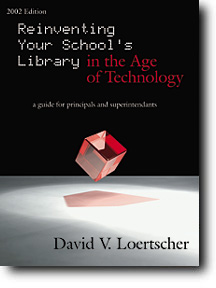 Reinventing Your School's Library in the Age of Technology:
Reinventing Your School's Library in the Age of Technology:A Guide for Principals and Superintendents
David V. LoertscherHi Willow Research and Publishing
ISBN: 0-931510-79-1; 2002 ed.; $20.00
Newly revised and updated for 2002, this best selling publication still asks the questions: Is a school library needed? Is any library needed? Isn’t it all on the Internet? This new guide is designed to answer these questions and more for the school administrator who is wondering what to do with an amazing array of new technologies added to the school environment.
Just 64 pages, each page is designed as a handout that can be used by administrators, a workshop, an interview, a planning session, or for a group of parents. Many pages contain checklists to stimulate thinking and planning. Two threads run through all sections - budget implications and assessment. Numerous graphic models present a concept succinctly for instant understanding. An invaluable tool!
View table of contents (requires Adobe Acrobat)
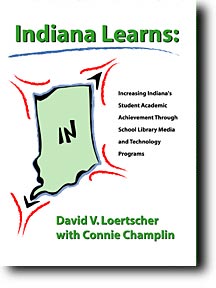
INDIANA LEARNS:
INCREASING INDIANA STUDENT ACADEMIC ACHIEVEMENT THROUGH SCHOOL LIBRARY MEDIA AND TECHNOLOGY PROGRAMS
David V. Loertscher with Connie Champlin
2002;
ISBN: 0-931510-85-6; $20.00
from Stenhouse Publishers
A companion to Reinventing Indiana's School Library Media Programs in the Age of Technology, this guide created for library media specialists and technology leaders provides a host of ideas, Indiana resources, concepts, links to Indiana PL 221, and a major section on data-driven decision making practices. The same one-idea-per-page format has been preserved. Support materials for this book can be found at: http://www.indianalearns.org
Reinventing Indiana’s School Library media Programs in the Age of Technology: A Handbook for Principals and Superintendents
David V. Loertscher with assistance by
Connie Champlin. Hi Willow Research & Publishing
ISBN: 0-931510-78-3; 2001; $20.00
Based on the popular Reinvent Your School’s Library booklet, this 94p. book targets administrators and other leaders in the state of Indiana. Tons of Indiana resources.
Should your state have its own version? Contact David Loertscher at davidl@wahoo.sjsu.edu.
View table of contents (requires Adobe Acrobat)
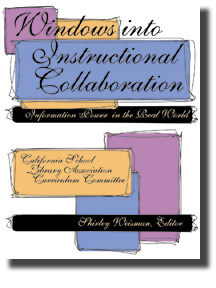 Windows into
Windows intoInstructional Collaboration:
Information Power in the Real World
Shirley Weisman
Hi Willow Research and Publishing
ISBN: 0-931510-82-1; 2001; $25.00
Effective collaboration with teachers in the building of exciting learning experiences remains as THE major challenge for school library media sprecialists. Weisman, chair of the Curriculum Committee of the California School Library Asoociation, went to top library media center programs in the state of California doing case study descriptions, getting the library media specialist’s story of a real educational experience and then done a design analysis.
Are these library media specialists perfect? No, yet their stories and the analysis gives hope to those strugging to raise academic achievement in their schools. Designed for self study, professional development sessions with teacher and library media specialists, and for courses preparing library media specialists.
View table of contents (requires Adobe Acrobat)
Collection Mapping in the LMC:
Building Library Media Center Collections in the Age of Technology
David V. Loertscher
Hi Willow Research & Publishing
ISBN: 0-931510-58-9; 1996; $25.00
As library media specialists face a new world of interconnection from the home and the classroom, what is the role of the LMC collection? Completely rewritten from the book Computerized Collection Development for School Library Media Centers published in 1986, the author demonstrates collection mapping techniques to position the LMC as an efficient node in a much larger network.
Topics covered include: building a technology access chart, drawing the collection map, building a budget and acquisition system, and evaluating the collection. An accompanying computer disk (IBM or Mac) provides various templates for acquisition databases, spreadsheets, and other data collection forms.
This book is a valuable tool for those reassessing their collection-building policies in the light of technology and it can also be used as a text for collection building courses aimed at library media specialists in elementary and secondary schools and any institution where the collection must be accountable to curriculum.
David Loertscher is a professor of Library & Information Science at San Jose State University and a past president of the American Association of School Librarians.
View table of contents (requires Adobe Acrobat)
 Building a School Library Collection Plan:
Building a School Library Collection Plan:A BeginningHandbook with Internet Assist
by David V. Loertscher and Blanche Woolls
with an Internet Assist by Janice Felker
Hi Willow Research and Publishing
1999; $25.00
ISBN: 0-931510-70-7
Designed for beginning professionals, this handbook with and accompanying web site covers the creation of collections in school libraries using the collection mapping process created by Loertscher. Each page of the book contains a single idea andprovides guidance with examples for collection mapping, implementation of a collection development plan, making the collection work, and evaluating the collection. The Internet site contains bibliographies, web sources, and useful collection development materials that need updating on a regular basis.
View table of contents (requires Adobe Acrobat)
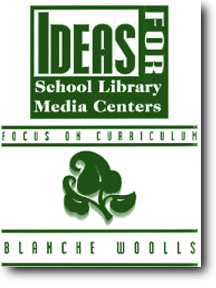 Ideas for School Library Media Centers:
Ideas for School Library Media Centers:
Focus on the Curriculum
2nd Edition
Blanche Woolls
Hi Willow Research and Publishing
ISBN: 0-931510-57-0; 1996; $30.00
This new edition of a best-selling idea book meets the growing need for curriculum-related activities designed to transform library media specialists into curriculum leaders. Restructured schools, portfolio assessment, and other innovations of the 90s, provide new opportunities to collaborate in the designing of instruction. This volume outlines trends in each area of the curriculum presenting the latest in the development of standards by professional curriculum associations. Chapters can be transformed into inservice presentations for administrators, teachers, and parents. Transparency masters at the end detail important text as suggested by the author.
Blanche Woolls is Director at the School of Library and Information Science, San Jose State University, and a past president of the American Association of School Librarians.

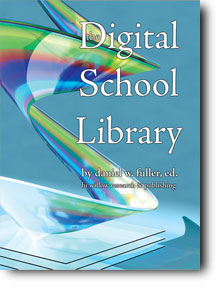 The Digital School Library
The Digital School Library